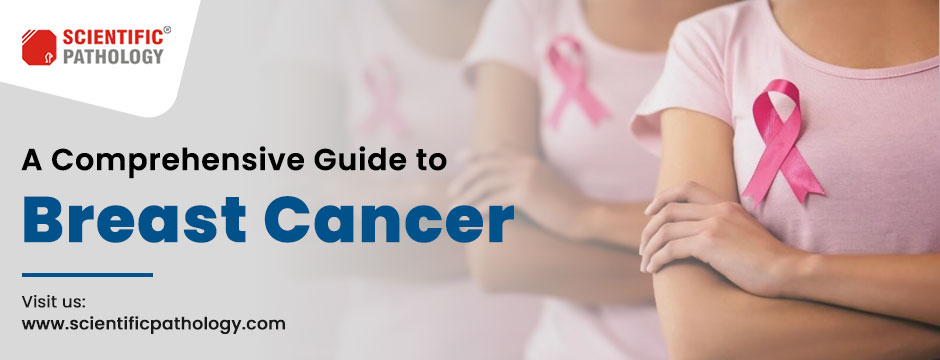A Comprehensive Guide to Breast Cancer: Understanding, Prevention, and Treatment
Breast cancer is among the most prevalent kinds of cancer in women around the world. While a breast cancer diagnosis might be stressful, advances in medical science, early detection methods, and treatment choices have dramatically improved survival rates. This blog will provide useful information regarding breast cancer, including its causes, danger signs, preventative techniques, and treatment choices.
Understanding the breast cancer:
Breast cancer is an aggressive growth that arises in the breast tissue, mainly in the milk ducts or lobules, It appears to be one of the most frequent cancers in women worldwide. While the specific causes are unknown, several risk factors like age, familial background, hormonal variables, and dietary habits have been discovered.
Early detection is critical for successful therapy, and frequent self-examinations and professional breast examinations are required. Treatment choices include radiation therapy, chemotherapy, surgery, and targeted therapy. Since increased awareness and breakthroughs in therapy, breast cancer patients' prospects have improved dramatically.
Breast cancer signs and symptoms
Individuals may experience different signs and symptoms of breast cancer, and some might not have any signs or symptoms at all in the beginning stages of the disease. It is, nonetheless, critical to be conscious of the following typical indications and symptoms.
A breast bulge or thickening:
Breast cancer symptoms include a new lump or tumor in the breast area. It may feel distinct from adjacent breast tissue and may last for a long time.
Breast size or form changes:
A healthcare practitioner should be consulted if there are any apparent alterations in the form or size of the breast, like swelling or dimpling.
Tenderness or discomfort in the breast:
While breast pain is not usually a sign of breast cancer, any persistent discomfort or soreness in one breast must be checked out by a doctor.
Nipple transformation:
Changes in the nipple's look, like redness, growth, or discharge (apart from breast milk), can signal a problem.
Detection technique of breast cancer at an early stage:
Early detection is important for effective breast cancer therapy. It can be achieved through the procedures listed below.
Breast Self-Examination:
Monthly self-examination is recommended for noticing any modifications in the breasts, like lumps, thickness, or nipple discharge.
Clinical Breast Examination:
A healthcare professional's regular clinical examinations aid in the detection of any anomalies or alterations to breast tissue.
Mammography: A mammogram is an X-ray imaging of the breast which may identify cancers before when they are visible.
Prevention Methods:
Although certain risk factors for breast cancer could not be avoided, there are various lifestyle changes and preventive steps that people can take.
- Maintain a healthy weight by engaging in regular physical activity and consuming a well-balanced diet.
- Avoid smoking and limit your alcohol consumption.
- Breastfeeding your children may lower the danger.
- Be aware of the family's history and, if needed, get genetic counseling and testing.
- Conduct self-examinations regularly and arrange mammograms.
Treatment Options for Breast Cancer:
Options for therapy for breast cancer are determined by various criteria, including the cancer's stage and kind, and one's personal choices. The following are some common therapeutic choices:
Surgery:
Surgery is frequently used as the initial therapy for breast cancer. It entails the removal of the tumor as well as, in certain situations, adjacent lymph nodes. There are two basic surgical alternatives:
- Lumpectomy: This procedure, referred to as breast-conserving surgery, entails eliminating the tumor while leaving the breast intact.
- Mastectomy: The entire breast is removed, either with or instead of breast reconstruction.
Chemotherapy:
Chemotherapy is the use of chemicals that destroy cancer cells throughout the body. It can be used to shrink tumors before surgery, to lower the chance of recurrence following surgery, or to deal with the disease in severe situations.
Radiation therapy:
Radiation therapy kills cancer cells and shrinks tumors by using high-energy X-rays. It is frequently used following surgery to eliminate any leftover tumor cells in the breast tissue or adjacent lymph nodes.
Targeted Therapy:
Drugs that particularly target certain properties of cancer cells are used in targeted therapy. For instance, breast cancer that is HER2-positive can be treated with targeted medications that inhibit the HER2 protein.
Bottom line
Breast cancer is a complicated disease, but with more knowledge and breakthroughs in treatment choices, patients' prognoses have dramatically improved. Women could take ownership of their breast health by identifying the risk factors, employing preventive actions, and getting frequent screenings.
Scientific Pathology is an Agra-based diagnostic laboratory dedicated to offering accurate and quick pathology services via the use of cutting-edge technology and a team of highly qualified specialists. Get your breast cancer exam done now to avoid this potentially deadly disease!




